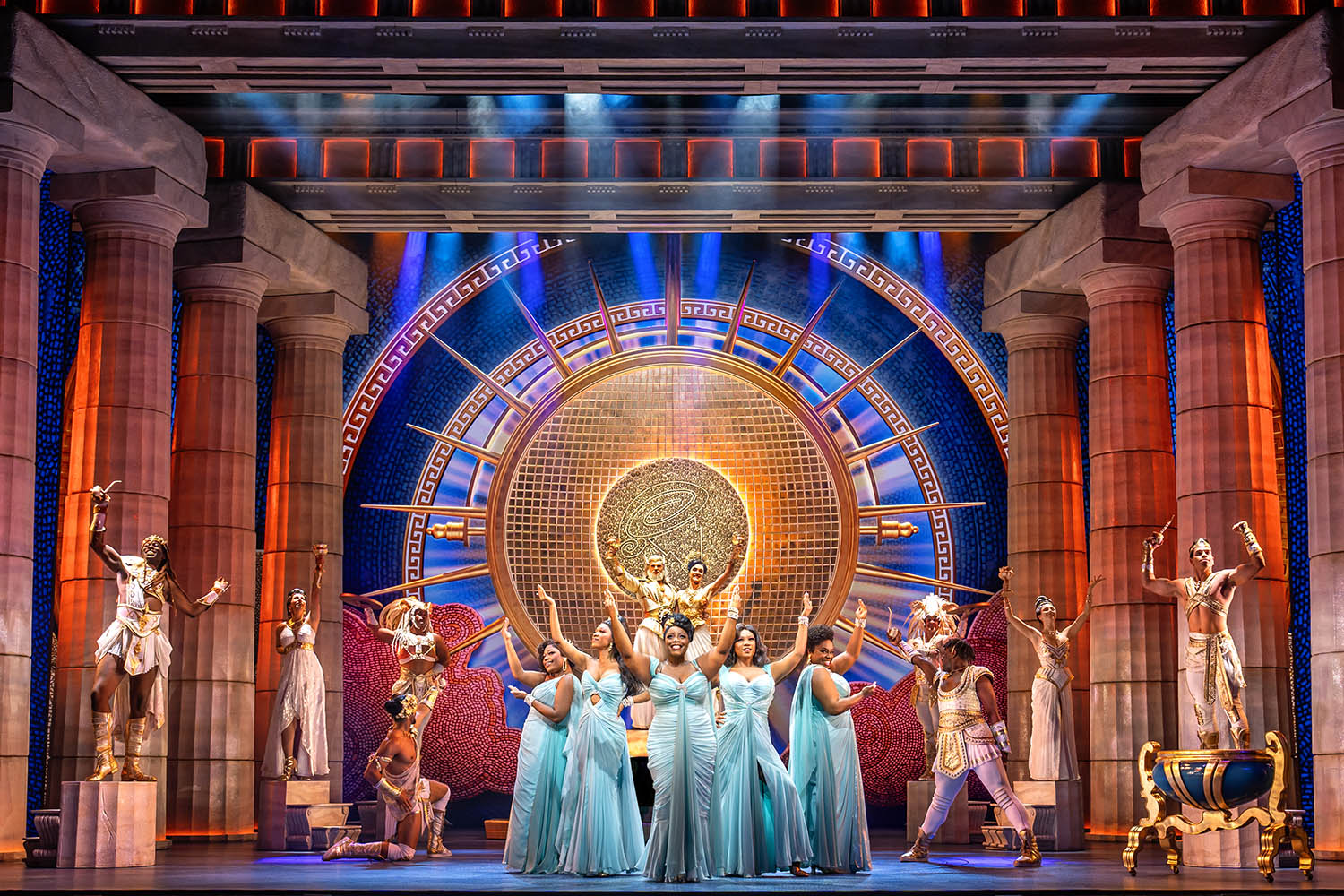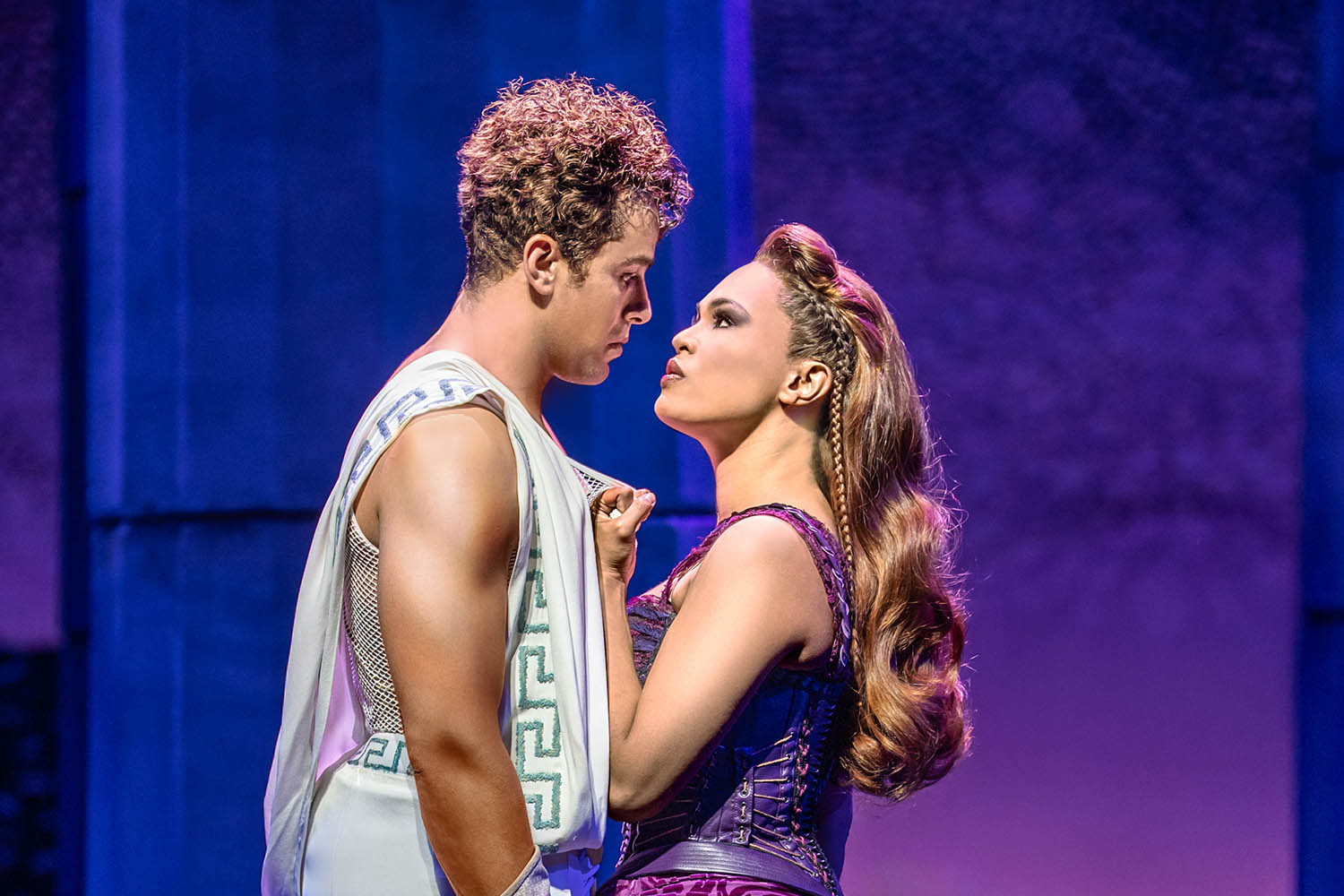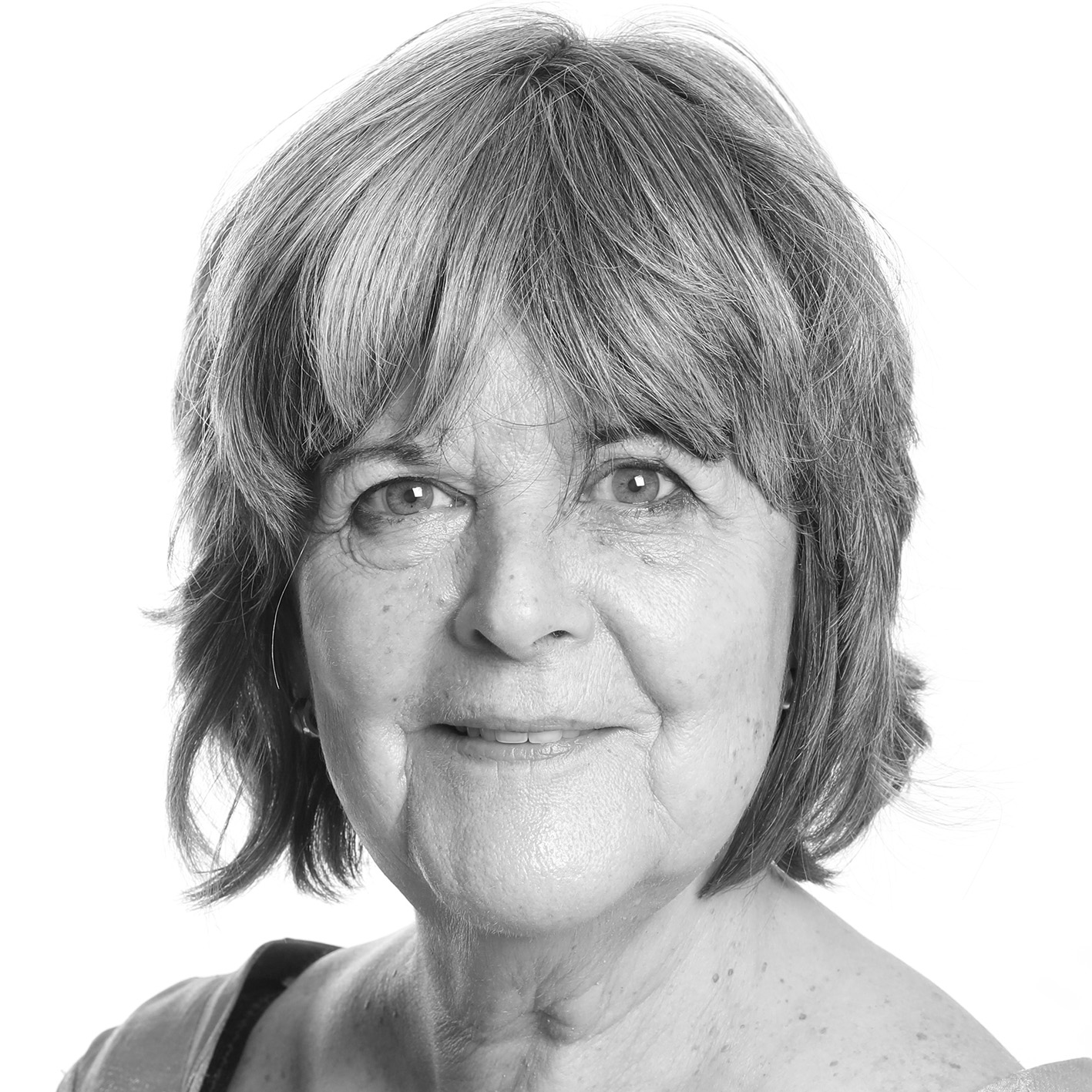Here is another labour for Hercules. He has to prove that the stage could do with another adaptation of a Disney movie. It is an uphill task.
Others have pulled it off, or pretty much. With perspicacious timing, Frozen opened at the Theatre Royal Drury Lane in 2021. Directed by Michael Grandage and designed by Christopher Oram, the show was the first to be staged at the magnificently restored building, now itself a dramatic experience: radiant and lofty with long vistas.
This was not the director-designer duo at the height of their aspiration but the accomplishment was considerable: a faithful adaptation that remade the movie’s effects theatrically, with an ice bridge that slid across the stage like a skater, icicles that sprang from the wings like daggers, a melting of hearts that chimed with the city’s coming back to life after lockdown. Most strikingly, The Lion King, though too alpha male and regal in plot for me, was gorgeously reimagined for the stage with Julie Taymor’s extraordinary puppet creatures – and has now been running in the West End for 26 years.

‘No one really has a character, just an identifying adjective’: the cast of Hercules
Casey Nicholaw’s production of Hercules hobbles behind these shows and behind the 1997 animated film, which mixed 90s pop with sassy exchanges based on classic Hollywood comedy and, crucially, was guided by the graphic hand of Gerald Scarfe, who, as production and character designer, whipped the action along with a snarl and a snicker.
With music by Alan Menken, lyrics by David Zippel and a book by Robert Horn and Kwame Kwei-Armah (late of the Young Vic), Nicholaw’s staging is remorselessly cheery: not so much humorous as perpetually grinning; not so much moving on – choreography is more vigorous than expressive – as jumping on the spot.
There is no place for soaring or for sharp edges: Pegasus has been cut, as have the Titans; the two shapeshifting demons, Panic and Pain, have been tamed, made into buffoons. Still, the plot is basically unchanged: the baby Herc, snatched by Uncle Hades from Daddy Zeus and Mummy Hera, has his godlike status tampered with, and is left only with superhuman strength: he goes “from zero to hero”, wins back his right to property on Mount Olympus but, having fallen for a quick-tongued woman, decides to stay among the Earthlings.
The core message – and Disney never allows you to forget there are messages – is delivered in the dogged I Can Go the Distance, which treats life like a sports tournament, and is sung with melodic conviction by Luke Brady’s Hercules.
Stephen Carlile’s Hades makes his villainy look like something he has deigned to pick up off the floor
But it is crackling feminist interventions that kick the movie into life. The Muses – Kamilla Fernandes (replacing Malinda Parris the night I attended), Candace Furbert, Sharlene Hector, Brianna Ogunbawo and Robyn Rose-Li – give good gospel, paradoxically bringing the word to classical Greece, with high-impact voices, reach-out-and-grab-the-audience presences and more costume than chord changes, in and out of clingy blue satin, boxy red coat dresses, black straw hats, head-to-toe gold, thigh-high boots. As costume designers, Gregg Barnes and Sky Switser are the show’s muses of wardrobe.
An overamplified brassy band often drowns out vocals, but Mae Ann Jorolan comes through as a crisp Meg and Trevor Dion Nicholas as a robust Phil(octetes). Still, no one really has a character, just an identifying adjective, and since everything stays at the same pitch of intensity, the actual distance travelled is tiny. It might be Hercules’s whole point that he is a bimbo – big biceps, small brain – but Brady almost drowns in pleasantness. He is hampered by appearing in what look like handwoven white shorts and surgical boots, and his dream of being in a place where everyone cheers him (he seems to think he is alone in liking the idea) simply looks like narcissism.
Though Horn and Kwei-Armah’s script is clever-heavy – “Dating is just wondering why someone is single and then finding out” – Dane Laffrey’s design hovers between panto and parody: white pillars skid around in front of cardboard walls and George Reeve’s colour-drenched videos. Squashy Cyclops and Hydra monsters, with hard-working human legs all too visible, lumber amiably around. Stephen Carlile’s Hades makes his villainy look like something he has deigned to pick up off the floor. He drips with disdain – “Is it hot in here or was that just my entrance?” – but seldom threatens. The movie suggests another menace – not to the gods but to the US – that goes unnoticed here. Presciently, the screen is dominated by huge muscle-flexing males. Who are extremely orange.
Hercules
Theatre Royal Drury Lane, London WC2; until 28 March 2026
Photographs by Johan Persson

